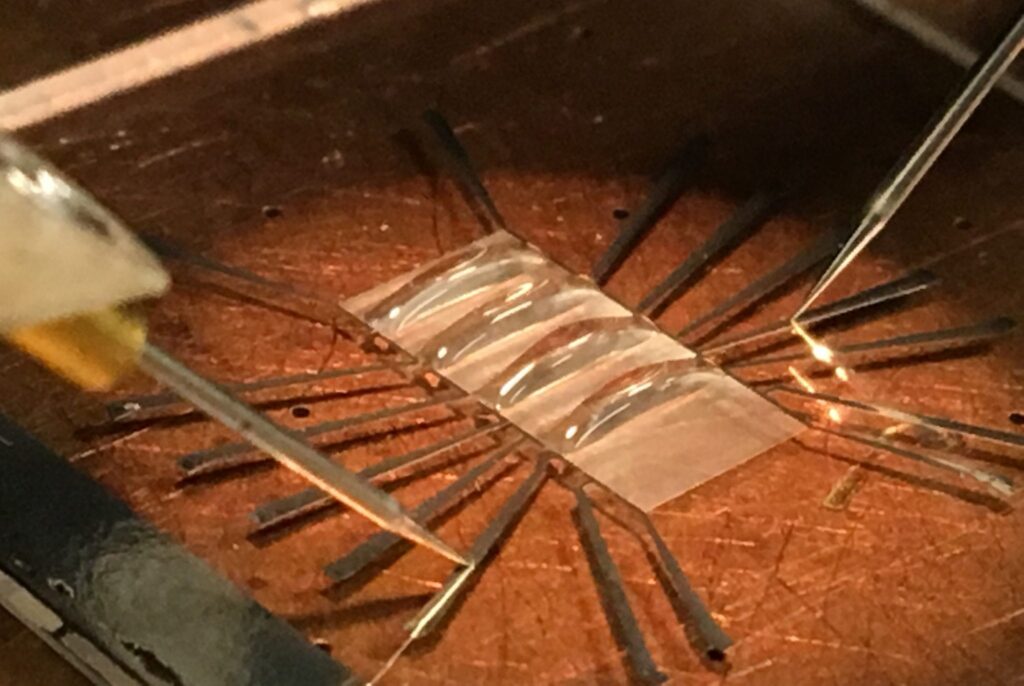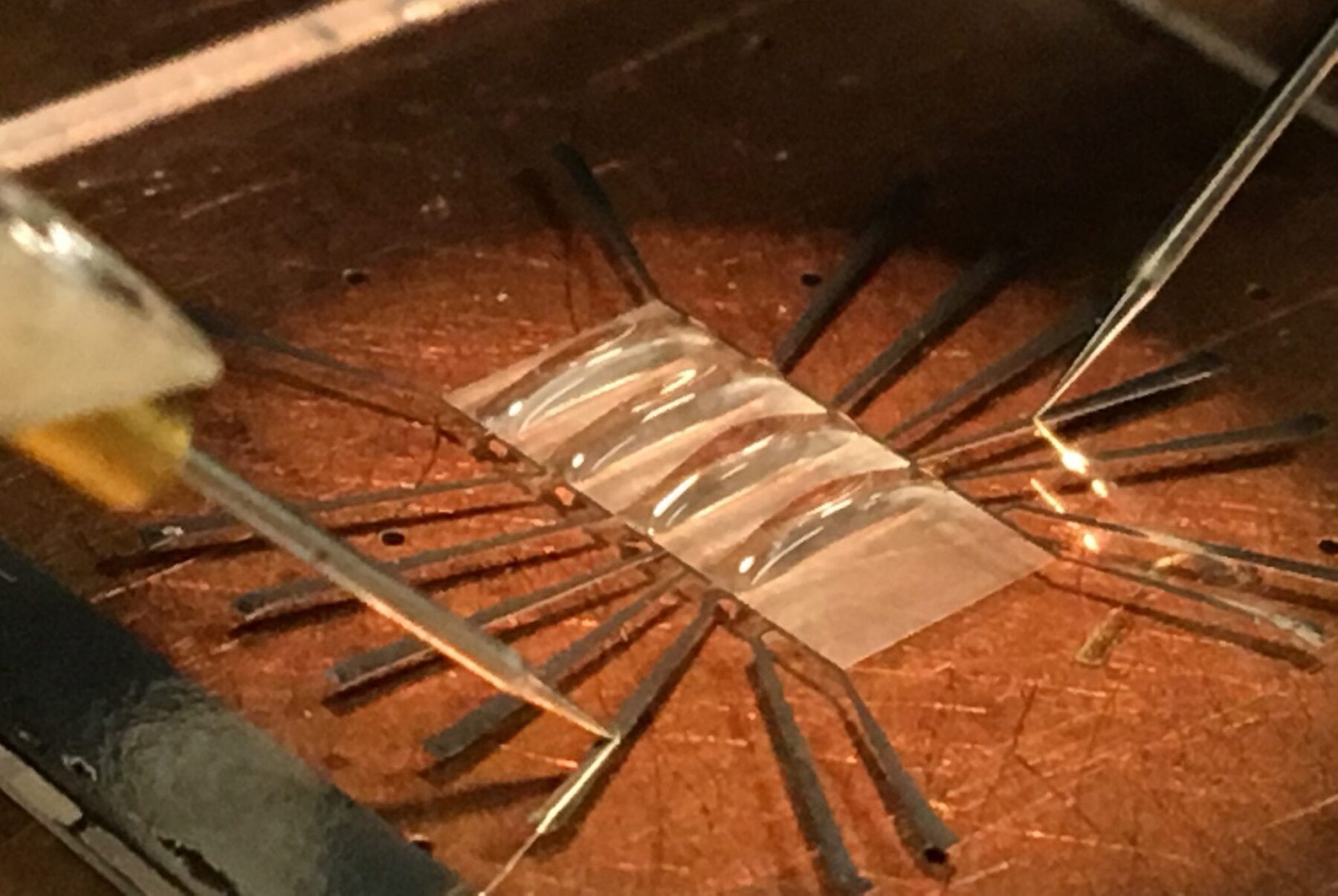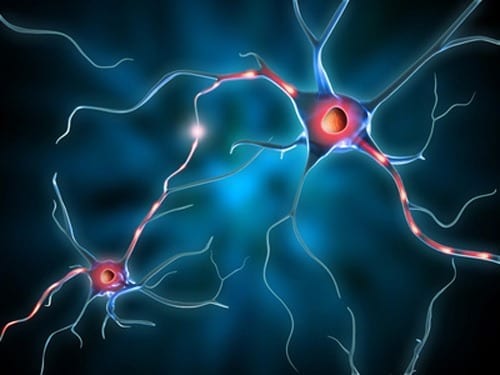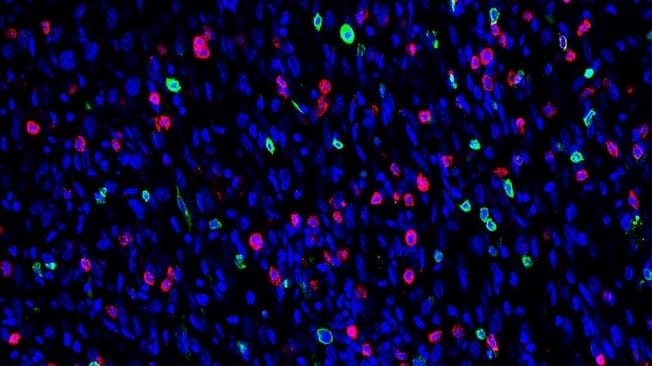
A new type of electronic sensor that might be used to quickly detect and classify bacteria for medical diagnostics and food safety has passed a key hurdle by distinguishing between dead and living bacteria cells.
Conventional laboratory technologies require that samples be cultured for hours or longer to grow enough of the bacteria for identification and analysis, for example, to determine which antibiotic to prescribe. The new approach might be used to create arrays of hundreds of sensors on an electronic chip, each sensor detecting a specific type of bacteria or pinpointing the effectiveness of particular antibiotics within minutes.
“We have taken a step toward this long-term goal by showing how to distinguish between live and dead bacteria,” said Muhammad Ashraful Alam, Purdue University’s Jai N. Gupta Professor of Electrical and Computer Engineering. “This is important because you need to be able to not only detect and identify bacteria, but to determine which antibiotics are effective in killing them.”
Findings are detailed in a research paper appearing this week in Proceedings of the National Academy of Sciences. The paper was authored by doctoral student Aida Ebrahimi and Alam. The droplet sensor evolved from a device originally designed to detect small concentrations of negatively charged DNA molecules in research that began about four years ago, Ebrahimi said.
“We did not anticipate that the sensor could be used to tell live and dead bacteria apart – it was a chance observation that eventually led us to this elegant way of measuring cell viability,” she said.
As described in the PNAS paper, the sensor works by detecting changes in electrical conductivity in droplets containing bacteria cells. (A YouTube video about the research is available at https://youtu.be/QN019bQJCb8).
“To see if someone is alive,” Alam said, “we can either count the grandchildren many generations later, which is analogous to the traditional growth-based techniques. Or, we can directly measure the person’s pulse, analogous to the proposed ‘osmoregulation-based’ detection of bacteria. Needless to say, immediate physiological measurement is faster and far superior.”
The Latest on: Detect and classify bacteria for medical diagnostics and food safety
[google_news title=”” keyword=”detect and classify bacteria for medical diagnostics and food safety” num_posts=”10″ blurb_length=”0″ show_thumb=”left”]
via Google News
The Latest on: Detect and classify bacteria for medical diagnostics and food safety
- Best Medical Alert Systems Of 2024on May 2, 2024 at 7:39 am
Bay Alarm Medical SOS In-Home With Fall Detection is our top pick; our reviewer found the response times to be quick, boosting her confidence in the product. Medical alert systems are important ...
- Food Recallson May 2, 2024 at 5:00 am
The USDA’s Food Safety and Inspection Service (FSIS ... person has become ill after drinking raw milk from the dairy. The bacteria was found in raw milk from Sunset View Creamer in preliminary ...
- How AI-Driven Diagnostics Can Save Lives When Humans Can’ton April 28, 2024 at 11:18 am
the fact is visual data-driven AI diagnostics are already making an impact across different medical settings. For instance, it can help with the detection of abnormal findings on radiographs ...
- Dangerous Bacteria Actively Seek Out Human Blood, Scientists Discoveron April 17, 2024 at 5:00 pm
Scientists have found evidence that certain disease-causing bacteria, including strains of Escherichia coli, are chemically attracted to the serum in our blood as a source of food. The horrifying ...
- Roving modern lab for food safety launchedon April 16, 2024 at 5:01 pm
TO guarantee that plant-based foods are safe for human consumption, a modern Mobile Plant Food Safety Laboratory was ... they are enough to detect the worst cases of contamination, allowing ...
- Foodborne Bacteria Have 'Vampiric' Lust for Bloodon April 16, 2024 at 11:02 am
"By learning how these bacteria are able to detect sources of blood, in the future we could develop new drugs that block this ability," Glenn said in a statement. "These medicines could improve ...
- Swiss startup leads in food safety with bacteriophage technologyon April 14, 2024 at 5:00 pm
Bacteria pose significant challenges ... has leveraged bacteriophages to tackle challenges in food safety, particularly in pathogen detection. Richter explains their innovative use of ...
- "Safety crisis": Food delivery's simmering violence problemon April 8, 2024 at 5:01 am
This isn’t just an UberEats problem; as the rate of online food delivery ... to its app to detect harassment between workers and customers. While DoorDash has implemented safety measures before ...
- Rapid, simultaneous detection of multiple bacteria achieved with handheld sensoron April 4, 2024 at 5:00 pm
coli or salmonella and food poisoning comes to mind. Rapid detection ... harmful bacteria prior to shipment of food and pharmaceutical products, thereby helping to quickly ensure safety at the ...
- Researchers develop handheld device for rapid bacterial detectionon April 4, 2024 at 5:00 pm
coli or salmonella and food poisoning comes to mind. Rapid detection ... harmful bacteria prior to shipment of food and pharmaceutical products, thereby helping to quickly ensure safety at the ...
via Bing News











